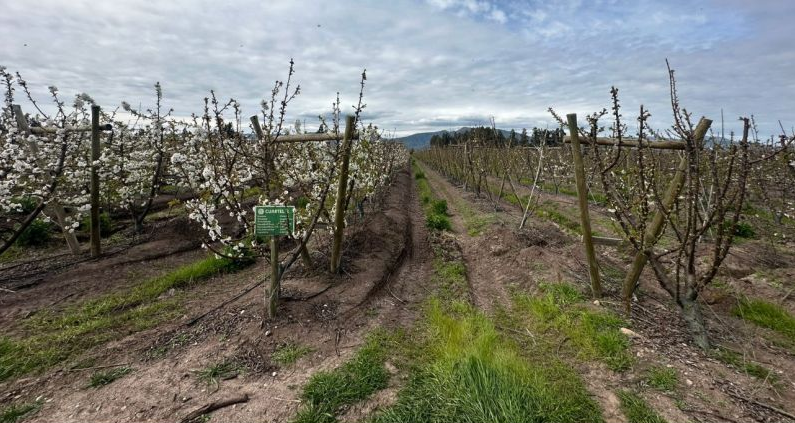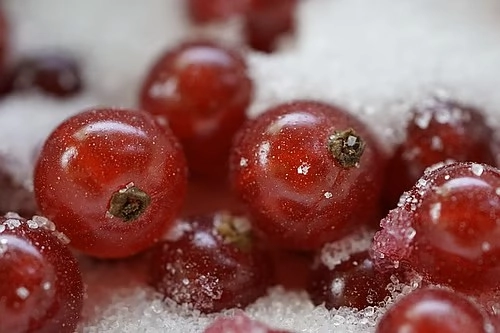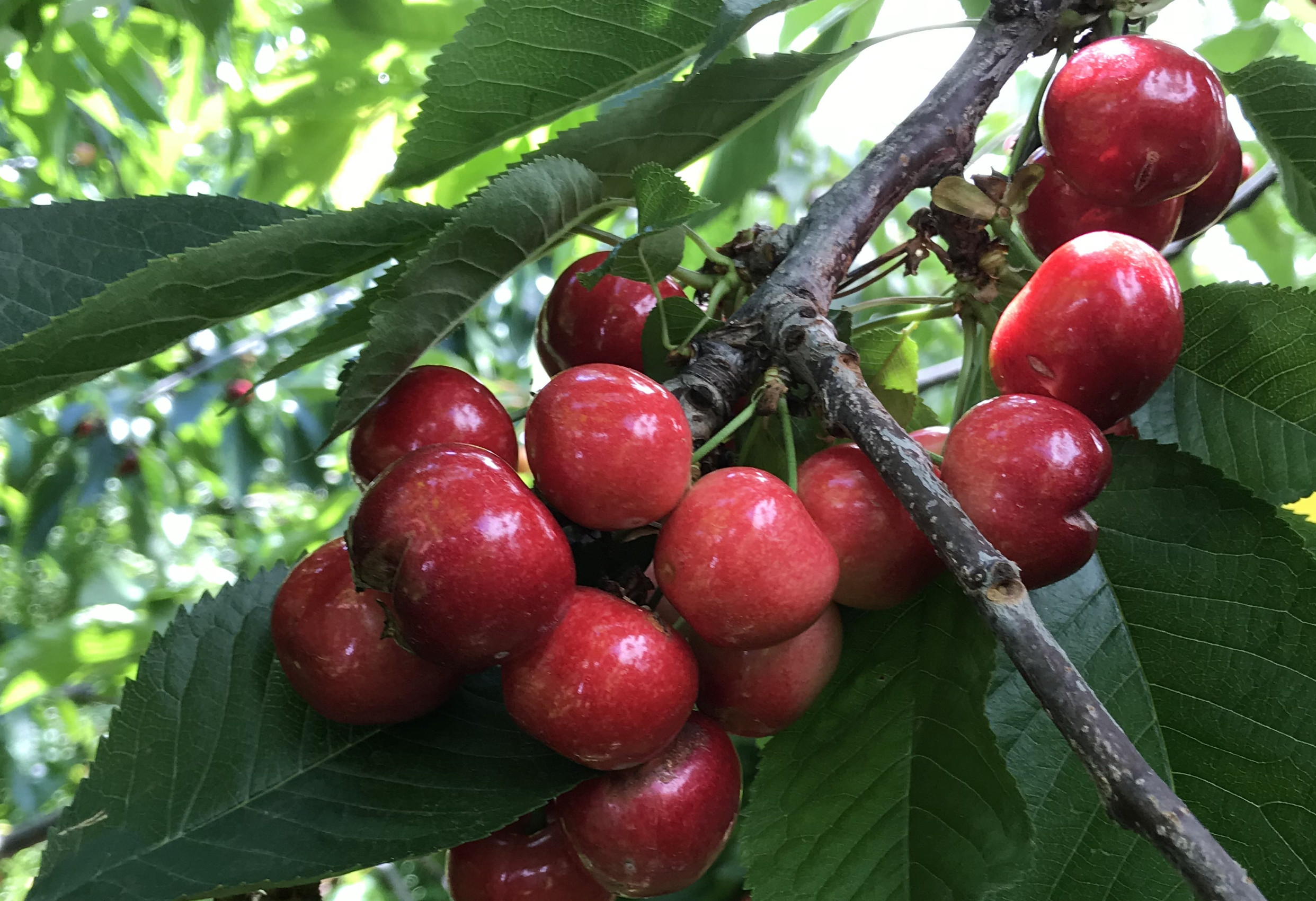“This season in Chile, we have had a sufficient accumulation in terms of quality and quantity of chilling hours (HF), so the cherries will require less thermal accumulation (GDH) to break dormancy,” says Lorena Pinto from A.N.A. Chile.
Lorena Pinto Almeida, product manager for Stone Fruits and Cherries at A.N.A. Chile, shares images of the cv. Sweet Aryana (d) PA1UNIBO on the left and Santina on the right, taken on September 11, 2024, in a commercial orchard located in El Huique, Santa Cruz, VI Region, Chile.

“This season in Chile, we have had a sufficient accumulation of quality and quantity of chilling hours (HF), so the cherries will need less thermal accumulation (GDH) to break dormancy,” Pinto emphasizes.
She adds that “last season there was a low quality and quantity of chilling hours, so the temperature required for bud break was higher, which especially affected the early varieties.”
Unfortunately, last season’s spring was quite cold, which delayed the harvest of many varieties by up to two weeks.” The requirements in terms of chilling hours and spring temperature (growing degree days GDD) are specific to each variety. Here are some charts from a study conducted by the Center for Stone Fruits comparing the current season with the previous one for two traditional cherry varieties, Santina and Lapins,” she concludes.
Source: Diario Frutícola
Image: Diario Frutícola
Cherry Times - All rights reserved













